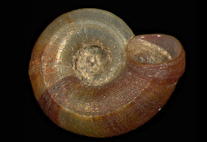Abstract
Pan-Podocnemididae turtles are ubiquitous in Late Cretaceous rocks of the Bauru Group in southeastern Brazil. This group of side-necked turtles is particularly abundant in a turtle-bearing site of the Presidente Prudente Formation known as Tartaruguito. Here, we describe the first turtle egg (LPRP-USP 0052) from the Tartaruguito site. LPRP-USP 0052 is nearly complete but misses a pole and measures 5,1 and 2,9-2,2 centimeters due to its flattened minor axis. The egg morphology and microstructure were analyzed by observations performed with CT, Optic Microscopy, Scanning Electronic Microscopy and Wave Dispersion Energy analyses. The eggshell ranges from 145 to160 micrometers thick. Considering the matching morphology of the new specimen and its provenance from the stratigraphic horizon that yielded only the podocnemidids Bauruemys and Roxochelys, it is most likely that LPRP-USP 0052 was produced by a podocnemidid turtle.

